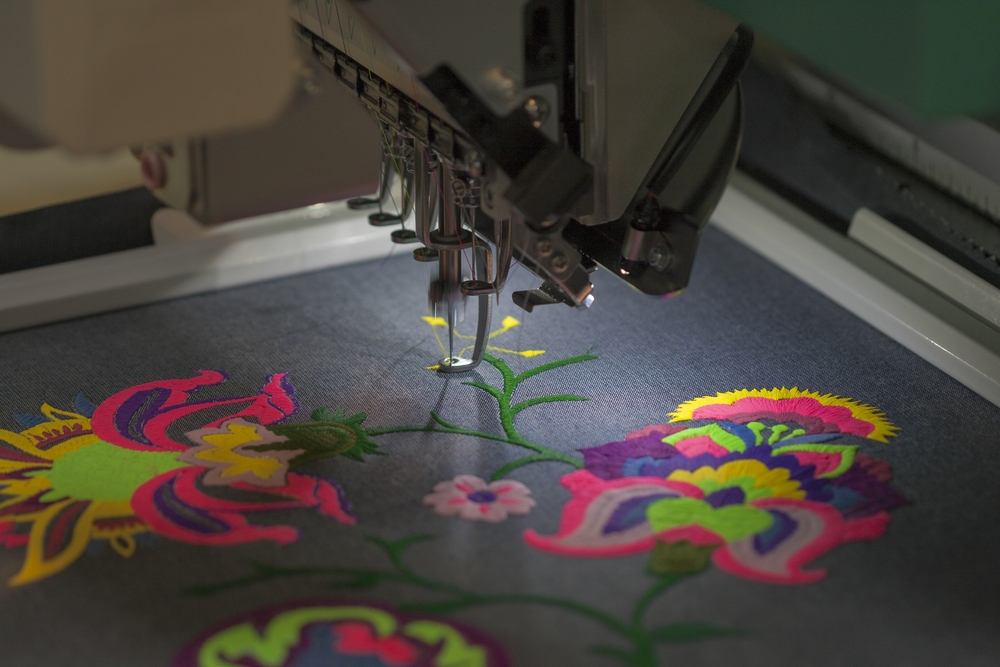Professional Digitizing for Embroidery: High-Quality Layouts
Professional Digitizing for Embroidery: High-Quality Layouts
Blog Article
Simplifying the Art of Needlework Digitizing: Step-by-Step Guide
As innovation continues to development, the digitization process has come to be a lot more obtainable, permitting fanatics to bring their detailed styles to life with simplicity. In this overview, we will decipher the complexities of needlework digitizing, damaging down each step methodically to streamline the procedure and encourage both novices and skilled embroiderers alike.
Comprehending Needlework Digitizing Software Application
Embroidery digitizing software acts as a crucial device for changing complex designs right into electronic layouts suitable with embroidery makers, assisting in accurate stitching and modification. This specific software program allows customers to import numerous image data layouts, such as JPG or PNG, and transform them into embroidery machine-readable formats like DST, EXP, or PES - Digitizing for Embroidery. By making use of features like stitch editing, padding choices, and string shade choice, digitizing software allows users to regulate every element of the design process
In addition, advanced embroidery digitizing software application uses devices for developing complicated styles, changing stitch thickness, and incorporating intricate details. Customers can likewise preview the design before stitching it out, making sure accuracy and minimizing mistakes. Additionally, several software programs supply automatic attributes that assist streamline the digitizing procedure, conserving time and initiative.
Recognizing the capabilities of embroidery digitizing software program is essential for achieving premium lead to embroidery projects. By grasping this device, embroidery lovers and professionals can unleash their creative thinking and bring elaborate designs to life with precision and effectiveness.

Selecting the Right Layout Documents
After acquainting yourself with the abilities of embroidery digitizing software, the following crucial action in the procedure is picking the ideal layout apply for your project. Digitizing for Embroidery. When picking a design data for embroidery digitizing, it's vital to think about the intricacy of the layout, the size of the final item, and the sort of material you will be dealing with
For elaborate designs with fine information, a high-resolution picture or vector file is suggested to ensure that the needlework maker can properly reproduce the layout. Additionally, the dimension of the last item plays a substantial role in choosing the best style file. Larger styles might call for greater resolution files to preserve clearness and intensity.
In addition, the kind of textile you will certainly be stitching on affects the choice of style file. Different materials might require adjustments in the design data to make certain that the stitches are correctly straightened and the layout looks like meant. By very carefully picking the ideal layout data based on these elements, you can set yourself up for an effective needlework digitizing procedure.
Digitizing Tools and Techniques
Making use of specialized software and precision techniques, digitizing devices are necessary in changing elaborate styles into embroidery-ready files. Embroidery digitizing software application, such as Wilcom, Hatch, or Embrilliance, gives the necessary system to transform art work right into stitch data. These programs supply functions like stitch editing, rug choices, and lettering tools to guarantee the style equates flawlessly onto textile.
One of the crucial techniques in digitizing is developing a clear path for the needlework machine to follow. This involves digitizing each aspect of the design with precision, establishing stitch types, densities, and instructions. By utilizing devices like digitizing tablet computers or software-specific plugins, embroiderers can accomplish a high level of precision in over here their digitized designs.
Additionally, mastering the art of padding stitching is crucial for generating quality needlework. Underlay sewing maintains the fabric and produces a structure for the layout, making sure that the last product is both visually enticing and durable. By understanding these digitizing tools and techniques, embroiderers can raise their craft and bring elaborate layouts to life with precision and efficiency.
Personalizing Stitch Kinds and Directions
The choice of stitch kinds can substantially impact the general look and appearance of the stitched layout. By strategically combining these stitch kinds, embroiderers can achieve deepness and measurement in their styles.
Furthermore, the instructions of stitches plays an essential function in enhancing the visual charm of the last embroidery. Varying stitch instructions can include structure, emphasize certain elements, and produce visual interest. Transforming the angle of stitches can mimic activity or natural patterns like hair or plumes. By trying out different stitch angles and patterns, embroiderers can bring their styles to life with exceptional detail and intricacy. Grasping the art of tailoring stitch types and instructions equips embroiderers to unleash their creative thinking and raise the top quality of their job.
Screening and Refining Your Digitized Design
To guarantee the accuracy and top quality of your digitized style, comprehensive screening and improvement are necessary steps in the needlework digitizing procedure. When you have actually finished the digitization of your design, it is vital to examine it before continuing with the real embroidery. Testing permits you to determine any kind of prospective concerns such as string breaks, stitch density issues, or design distortions that might affect the outcome.

After testing, it is very important to improve your digitized layout based on the comments from the test sew-out. This may involve tweaking sew setups, changing densities, or making changes to the general layout to accomplish the wanted result. By iterating with testing and refinement, you can tweak your digitized design to excellence prior to progressing with the real embroidery procedure.
Conclusion
To conclude, mastering the why not look here art of embroidery digitizing needs an extensive understanding of the software program, selecting the ideal style data, using digitizing tools and methods, personalizing stitch types and directions, and screening and refining the digitized layout. By complying with these actions, embroiderers can simplify the digitizing process and produce high-quality embroidered styles with precision and performance.
Report this page